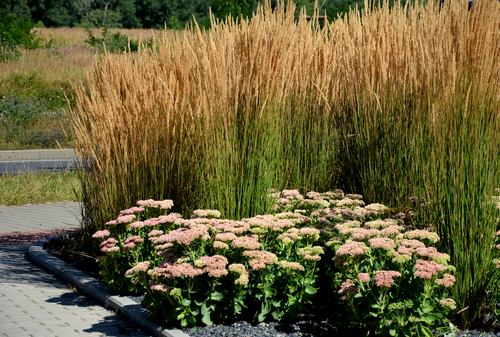Karl Foerster grass, also known as Calamagrostis x acutiflora ‘Karl Foerster,’ is a popular ornamental grass that is known for its tall, slender, and upright growth habit. It is an excellent choice for landscaping because of its unique texture, which adds interest to any garden.
However, planting Karl Foerster grass alone may not be enough to create a visually stunning garden. Knowing what to plant with Karl Foerster grass can help you create a cohesive and visually appealing landscape.
Understanding the growing conditions and requirements of it is essential before deciding what to plant with Karl Foerster grass. Karl Foerster grass prefers full sun to partial shade and well-draining soil.
It is also drought-tolerant and can withstand wet soil conditions. When planting companion plants, it is essential to choose those that have similar growing conditions to Karl Foerster grass.
Companion plants for Karl Foerster grass come in different colors, sizes, and textures. Some popular options include Rudbeckia, Coreopsis, Echinacea, Liatris, and Salvia. These plants complement the tall and slender growth habit of Karl Foerster grass and add color and texture to the landscape.
When choosing companion plants, it is essential to consider their growth habit and how they will interact with Karl Foerster grass.
Key Takeaways
- Understanding the growing conditions of Karl Foerster grass is essential before planting companion plants.
- Companion plants for Karl Foerster grass come in different colors, sizes, and textures, and it is essential to consider their growth habit and how they will interact with Karl Foerster grass.
- Popular companion plants for Karl Foerster grass include Rudbeckia, Coreopsis, Echinacea, Liatris, and Salvia.
More on this category:
- What to Plant with Autumn Joy Sedum?
- What to Plant Under a Fig Tree?
- What to Plant Next to Brussels Sprouts?
Understanding Karl Foerster Grass
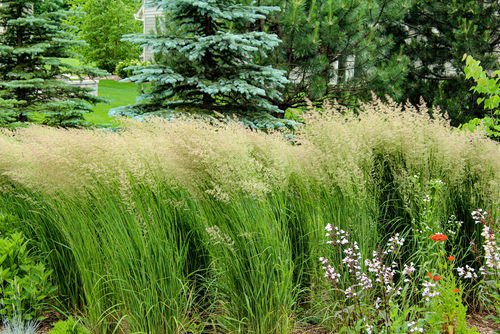
Karl Foerster grass, also known as feather reed grass, is a popular ornamental grass that is frequently used in landscaping projects. It is a clump-forming grass that grows upright, with narrow green leaves and feathery flower plumes that emerge in early summer.
The plant can grow up to 5 feet tall and 2 feet wide, and it is hardy in USDA zones 5 to 9.
Karl Foerster grass is a member of the Poaceae family, which includes more than 10,000 species of grasses. It is a hybrid between two other grass species, Calamagrostis arundinacea and Calamagrostis epigejos. The plant was first developed by Karl Foerster, a German horticulturist, in the early 1900s.
One of the reasons why Karl Foerster grass is so popular is its versatility. It can be used in a variety of ways, from creating a focal point in a garden to providing a backdrop for other plants. It is also a great choice for erosion control, as its deep roots help to stabilize soil on slopes and banks.
When planting Karl Foerster grass, it is important to choose companion plants that will complement its upright habit and feathery plumes. Some good options include:
- Coreopsis: This genus of perennials has eye-catching yellow flowers that contrast nicely with Karl Foerster grass’s green foliage.
- Echinacea: These purple and pink-colored plants are a great choice for adding color and texture to a Karl Foerster grass planting.
- Rudbeckia: This genus of perennials has bright yellow flowers that look great with Karl Foerster grass’s feathery plumes.
Planting Conditions for Karl Foerster Grass
Karl Foerster grass is a versatile plant that can grow in a variety of conditions. It prefers full sun to partial shade and can tolerate a range of soil types, including heavy clay. However, it performs best in well-draining soils that are rich in organic matter.
Spring is the best time to plant Karl Foerster grass, but it can also be planted in the fall. The plant requires regular watering during the first growing season to establish a strong root system. Once established, it is drought-tolerant and requires minimal watering.
Mulching around the base of the plant can help retain moisture and suppress weeds. However, care should be taken to avoid mulching too close to the stem, as this can lead to rot.
In terms of companion planting, Karl Foerster grass pairs well with a variety of plants. Rudbeckia, with its bright yellow petals, complements the golden tan of the grass’s feathery flowers. Elijah blue grass is a good choice for a border plant, as it only grows up to 8 inches tall.
Seasonal Care and Maintenance

Karl Foerster grass is a cool season grass that requires little maintenance once established. However, there are a few things that can be done to keep it looking its best throughout the year.
1. Fall and Winter
In the fall, it is recommended to leave the seed heads on the plant as they add interest to the winter landscape. In late winter or early spring, cut back the grass to about 6 inches above the ground. This will allow new growth to emerge in the spring.
During the winter months, Karl Foerster grass can withstand harsh conditions such as hoar frost and snow. However, if the winter is particularly dry, it may be necessary to water the grass occasionally.
2. Maintenance
Karl Foerster grass is a low-maintenance plant that requires little care. However, it is important to remove any dead or damaged foliage throughout the growing season. This will help to keep the plant looking tidy and prevent disease from spreading.
In addition, it is recommended to fertilize the grass once a year in the spring. Use a balanced fertilizer with equal amounts of nitrogen, phosphorus, and potassium.
3. Late Summer
In late summer, Karl Foerster grass can become quite dry and may require additional watering. However, it is a drought-tolerant plant and can withstand dry conditions better than many other ornamental grasses.
Companion Plants for Karl Foerster Grass
Karl Foerster grass is a popular ornamental grass that can add texture, height, and movement to a garden. When planting Karl Foerster grass, it is important to consider companion plants that will complement its features and create a beautiful and cohesive landscape.
1. Ornamental Grasses
Karl Foerster grass can be paired with other ornamental grasses to create a stunning display of textures and colors. Some great options include:
- Elijah Blue Fescue: This low-growing grass has blue foliage that contrasts nicely with the upright habit of Karl Foerster grass.
- Karley Rose Fountain Grass: This pink-flowered grass complements the golden tan color of Karl Foerster grass and adds a touch of softness to the landscape.
- Blonde Ambition: This grass has unique chartreuse flowers that add a pop of color to the landscape and look great when planted with Karl Foerster grass.
2. Ornamental Plants
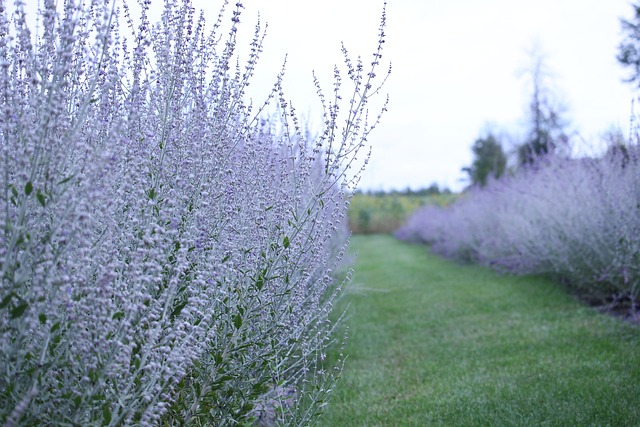
Karl Foerster grass can also be paired with ornamental plants that share similar growing conditions and complement its features. Some great options include:
- Coreopsis: This yellow-flowered plant adds a burst of color to the landscape and looks great when planted in front of Karl Foerster grass.
- Liatris: This tall, spiky plant has purple flowers that complement the upright habit of Karl Foerster grass and add a touch of drama to the landscape.
- Black-eyed Susan: This yellow-flowered plant is a classic companion for Karl Foerster grass and adds a bright pop of color to the landscape.
- Russian Sage: This gray-green plant has purple flowers that complement the golden tan color of Karl Foerster grass and add a soft, airy texture to the landscape.
3. Shrubs
Karl Foerster grass can also be paired with shrubs that share similar growing conditions and complement its features. Some great options include:
- Butterfly Bush: This purple-flowered shrub attracts butterflies and hummingbirds to the garden and looks great when planted in front of Karl Foerster grass.
- Spirea: This pink-flowered shrub has a similar upright habit to Karl Foerster grass and adds a touch of softness to the landscape.
- Potentilla: This yellow-flowered shrub is a great companion for Karl Foerster grass and adds a bright pop of color to the landscape.
Using Karl Foerster Grass in Landscaping
Karl Foerster grass is a versatile plant that can be used in many different landscaping settings. Its tall, upright growth habit and attractive flower stalks make it an excellent addition to any garden or landscape. Here are some ways to use Karl Foerster grass in landscaping:
1. Mass Planting
Karl Foerster grass is an excellent choice for mass planting. Its upright growth habit and narrow leaves create a striking effect when planted in large groups. This plant was named the Perennial Plant of the Year in 2001 by the Perennial Plant Association, which recognized its outstanding qualities as a mass planting.
2. Rain Garden
Karl Foerster grass is also an excellent choice for rain gardens. Its deep root system makes it an excellent plant for absorbing excess water in wet areas. This plant is native to Minnesota, where it is often used in rain garden designs.
3. Winter Interest
Karl Foerster grass is a great plant for adding winter interest to the landscape. Its upright growth habit and attractive flower stalks create a striking effect when covered in snow. This plant is also deer resistant, making it a great choice for winter landscapes.
4. Specimen Plant
Karl Foerster grass is an excellent choice for a specimen plant. Its tall, upright growth habit and attractive flower stalks make it a standout plant in any landscape. This plant is also low maintenance, making it a great choice for busy gardeners.
Planting with Vegetables and Legumes
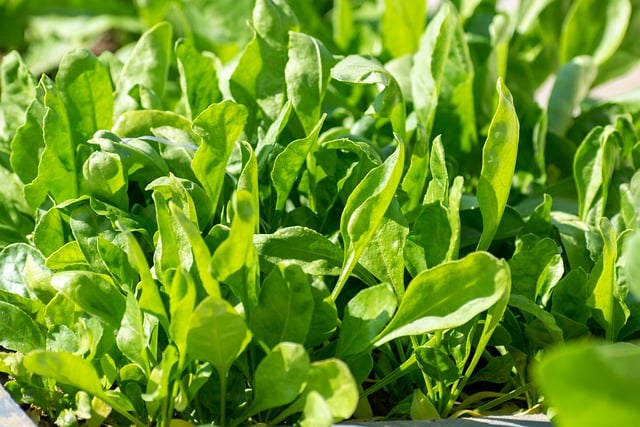
Karl Foerster grass can be paired with a variety of vegetables and legumes to create a beautiful and functional garden. Legumes, such as hairy vetch, can be used as a groundcover beneath the grass, while also fixing nitrogen in the soil.
Spinach is another great option to plant alongside Karl Foerster grass, as it can be harvested early in the season before the grass has grown too tall.
Cool-season grasses, such as wheat and rye, can also be planted with Karl Foerster grass. These grasses can provide winter interest and texture, while also helping to suppress weeds. Peas are another option to consider, as their vining habit can create a beautiful contrast to the upright growth of the Karl Foerster grass.
When planting vegetables and legumes alongside Karl Foerster grass, it is important to consider their individual growing requirements. For example, spinach prefers cooler temperatures and may not do well in hot, dry conditions. Peas, on the other hand, require full sun and well-draining soil.
Potential Challenges with Karl Foerster Grass
Karl Foerster grass is a popular ornamental grass variety that is known for its aesthetic appeal, hardiness, and low maintenance requirements.
However, like all plants, it faces certain challenges that may affect its growth and appearance. This section will discuss some of the potential challenges associated with growing Karl Foerster grass and offer some tips on how to overcome them.
1. Wind
One of the main challenges that Karl Foerster grass faces is wind damage. This grass variety is known for its tall, slender stems that can reach up to 5 feet in height.
While this makes it an excellent choice for adding height and texture to a garden, it also makes it vulnerable to wind damage. Strong winds can cause the stems to bend or break, which can affect the plant’s overall appearance.
To prevent wind damage, it is important to plant Karl Foerster grass in a location that is sheltered from strong winds. If this is not possible, staking the plants can provide additional support and help prevent bending or breaking.
2. Invasive Growth
Another potential challenge associated with Karl Foerster grass is invasive growth. While this variety is not as invasive as some other ornamental grasses, it can still spread beyond its intended growing site if not properly maintained. This can be especially problematic if it spreads into nearby garden beds or lawns.
To prevent invasive growth, it is important to regularly divide and thin out Karl Foerster grass plants. This will help keep the plant’s growth in check and prevent it from spreading beyond its intended location.
3. Rhizomes
Karl Foerster grass is a rhizomatous grass, which means that it spreads through underground stems called rhizomes. While this can be beneficial for filling in gaps in a garden bed, it can also lead to overcrowding and invasive growth if not properly managed.
To prevent rhizomatous growth from becoming a problem, it is important to regularly divide and thin out Karl Foerster grass plants. This will help keep the plant’s growth in check and prevent it from spreading beyond its intended location.
4. Shaded Areas
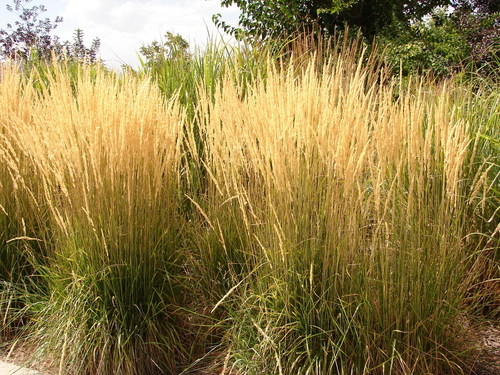
While Karl Foerster grass prefers full sun, it can also tolerate partial shade. However, if it is grown in an area that is too shaded, it may become leggy and weak, which can affect its overall appearance.
To prevent leggy growth, it is important to plant Karl Foerster grass in an area that receives at least 6 hours of direct sunlight per day. If this is not possible, consider planting it in a location that receives dappled shade throughout the day.
5. Texture
Karl Foerster grass has a fine, feathery texture that can be complemented by a variety of other plants. However, it may not pair well with plants that have a coarse or bold texture, as this can create a visual clash.
To create a cohesive garden design, consider pairing Karl Foerster grass with plants that have a similar texture. For example, plants with fine, needle-like foliage or delicate flowers can complement the feathery texture of Karl Foerster grass.
Frequently Asked Questions
What are some good companion plants for ornamental grasses?
Ornamental grasses, including Karl Foerster grass, pair well with a variety of flowering plants. Some good companion plants for Karl Foerster grass include:
1. Rudbeckia: The bright yellow petals of rudbeckia blooms complement the golden tan of the reed grass’s feathery flowers.
2. Coneflowers: The pink, purple, or white flowers of coneflowers provide a striking contrast to the green foliage of Karl Foerster grass.
3. Salvia: The blue or purple flowers of salvia create a beautiful contrast with the green foliage of Karl Foerster grass.
4. Russian Sage: The silver-gray foliage and lavender-blue flowers of Russian sage create an elegant contrast with the green foliage of Karl Foerster grass.
How does the growth rate of Karl Foerster grass compare to Elijah Blue Fescue?
Karl Foerster grass is a fast-growing grass that can reach a height of 4 to 5 feet and a spread of 2 to 3 feet in just a few years. In comparison, Elijah Blue Fescue is a slow-growing grass that typically reaches a height of 8 to 12 inches and a spread of 12 to 18 inches.
Can Calamagrostis Karl Foerster be grown in containers?
Yes, Calamagrostis Karl Foerster can be grown in containers. However, it is important to choose a large enough container to accommodate the plant’s root system and to ensure that the soil is well-draining.
What are the RHS recommendations for planting Calamagrostis Karl Foerster?
The Royal Horticultural Society (RHS) recommends planting Calamagrostis Karl Foerster in full sun or partial shade in moist, well-drained soil. The plant should be watered regularly during the growing season and cut back to ground level in late winter or early spring.
What are some popular plants that pair well with Karl Foerster grass?
In addition to the companion plants listed above, some other popular plants that pair well with Karl Foerster grass include:
1. Alliums: The purple or white flowers of alliums provide a striking contrast to the green foliage of Karl Foerster grass.
2. Daylilies: The bright orange, yellow, or red flowers of daylilies create a beautiful contrast with the green foliage of Karl Foerster grass.
3. Sedums: The pink, red, or white flowers of sedums provide a striking contrast to the green foliage of Karl Foerster grass.
What is the recommended spacing for planting Karl Foerster grass?
The recommended spacing for planting Karl Foerster grass is 18 to 24 inches apart. This allows enough room for the plant to grow and spread, while also creating a dense, full look.

Hey, I’m Lisa and I’ve been an avid gardener for over 30 years. I love writing, talking and living in the garden! Feel free to connect with me on my socials below

